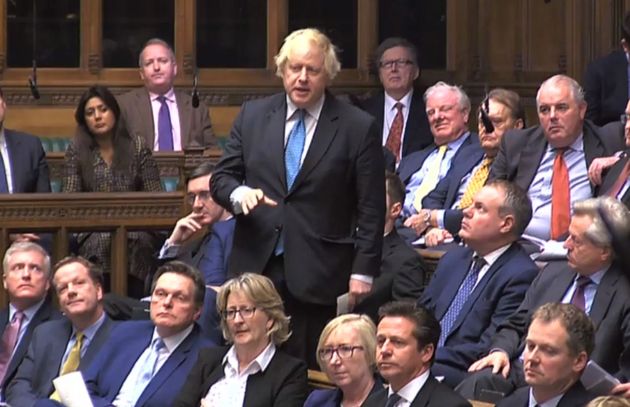EU leaders approved Theresa May’s Brexit deal on Sunday – but now it gets tricky. She has to convince MPs to vote in favour of it on December 11, and it doesn’t look like they want to.
At least 90 Tory MPs, both on the Brexit side and those in favour of Remain, have said they will vote against it, and Labour leader Jeremy Corbyn has confirmed he will order his MPs to vote against. The Northern Irish DUP, which props up May’s minority government, will not support it. The Lib Dems and the SNP are also opposed.
But if the Commons says no – what happens then?
If at first you don’t succeed, try again
One idea that recently gained traction in Westminster is that MPs could be asked to vote for the deal again in the New Year.
The theory is if the Commons votes down, the deal the markets will tank – scaring enough MPs into voting in favour when presented with it a second time.
This is the so-called TARP tactic. In 2008, the United States House of Representatives rejected the US government’s proposed $700bn Troubled Asset Relief Program (TARP) designed to tackle the banking crisis. After the vote, the Dow Jones industrial average fell by 7% – then the largest-ever one-day fall. Members of Congress were so spooked by the crash, they changed their minds.
But asked last week if this was the plan, Downing Street insisted: “Absolutely not.”
It probably wouldn’t work anyway. MPs opposed to the deal, convinced it is bad for the UK, seem unlikely to be moved by market fluctuations easily dismissed as what they call “Project Fear”, in which dire warnings about the future of the UK’s economy are allegedly used to scare voters and MPs into backing remaining in the EU.

Or, ask the EU for more…?
European leaders have made clear it is this deal or nothing. The European Commission president Jean-Claude Juncker issued a warning on Sunday that “this is the only deal possible”.
But many do not believe him – as a no deal Brexit would be bad for the EU as well as the UK.
They hope if parliament rejects this deal the British government will be able to go back to Brussels and negotiate a better agreement. The EU summit scheduled for December 13-14 would likely be the last chance to secure this.
Given the Commons vote is expected to be held on December 12 – this would be cutting it more than fine.
The Norway option
It was reported over the weekend than one Plan B being war-gamed by ministers is pushing for European Economic Area (EEA) membership. This would keep the UK in the single market but out of the EU’s political institutions – as Iceland, Liechtenstein and Norway are. With a no deal Brexit on the horizon, it could secure a majority in the Commons.
In June, Jeremy Corbyn ordered his MPs to abstain on a vote that would have kept the UK in the EEA. But 75 Labour MPs ignored him and voted in favour. Only 15 voted against. Importantly, DUP leader Arlene Foster did not rule out supporting EEA membership when asked on Sunday.
A no deal Brexit
The UK is set to leave the EU on March 29, 2019 under the terms of the Article 50 process. If the Commons rejects the prime minister’s deal – possibly repeatedl, and no revised deal wins support from MPs, the UK will exit with no deal at all.
May could quit
May has refused to rule out resigning should parliament reject her deal. Last week she was asked three times whether she would quit, and simply said she was “not thinking about me”.
Faced with the defeat of her most important political achievement – she might decide the time had come to leave. The Conservative Party would have to pick a new leader as exit day loomed.
May could be ousted
Brexiteer Tories failed to topple the prime minister earlier this month after they fell short of the 48 names needed to trigger a no confidence vote. But if the PM sees her deal voted down, the party could decide to move against her en masse.
Again, triggering up a messy leadership contest on the eve of Brexit.

There could be a general election
Jeremy Corbyn has said his priority is securing a general election. Not stopping Brexit. Under the Fixed Term Parliament Act this is hard. Two-thirds of MPs have to vote in favour. But enough Tory MPs could decide it is the only way to break the deadlock. Or May might feel she has no choice than to ask the country to endorse her deal with an election.
A Labour-led Brexit
Labour could win a majority. In this scenario, the party has suggested it would ask the EU to extend the Article 50 process to delay Brexit while it tried to negotiate a better deal for the UK.
A second referendum
If there is no election, Labour has said it could decide to push for a second referendum. And with pro-EU Tory MP support there could be a majority in the Commons for one.
May could win
The prime minister, of course, could win the vote. If the deal is passed by MPs, next comes the long process of agreeing on how the UK will trade with the bloc in the future. Negotiators have until the end of the transition period, which could run until the end of 2022, to strike a deal.